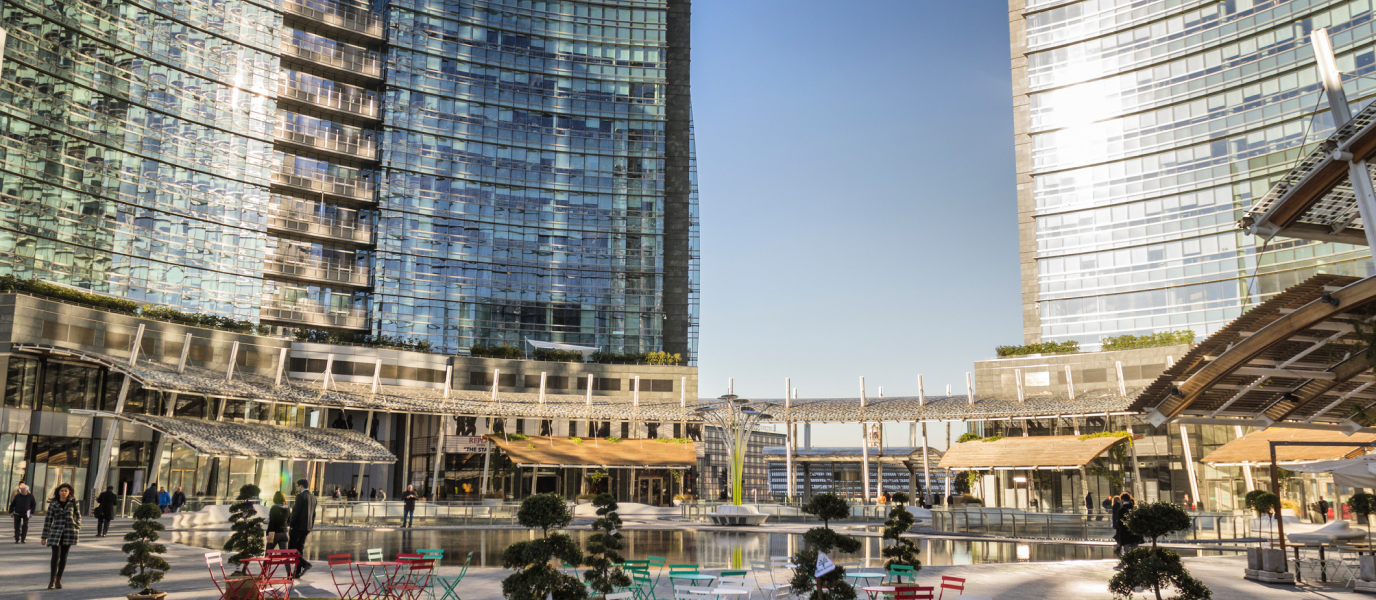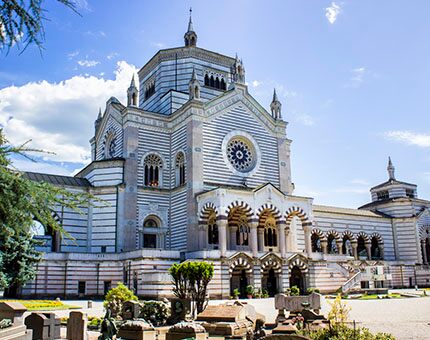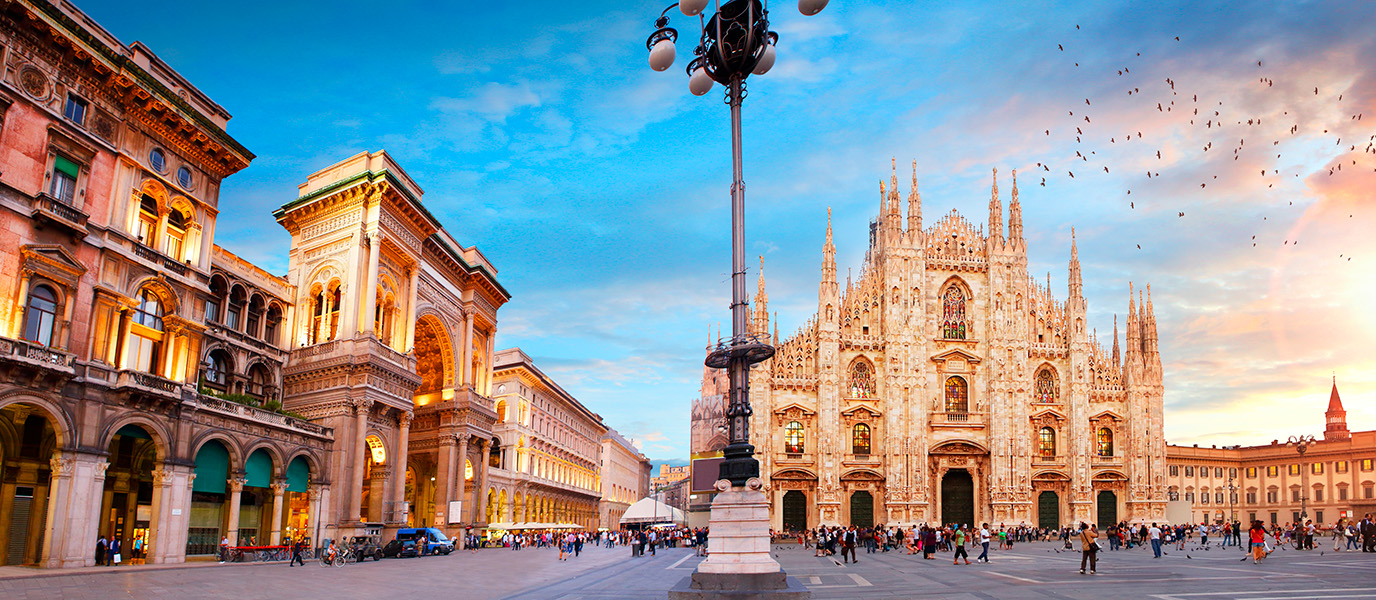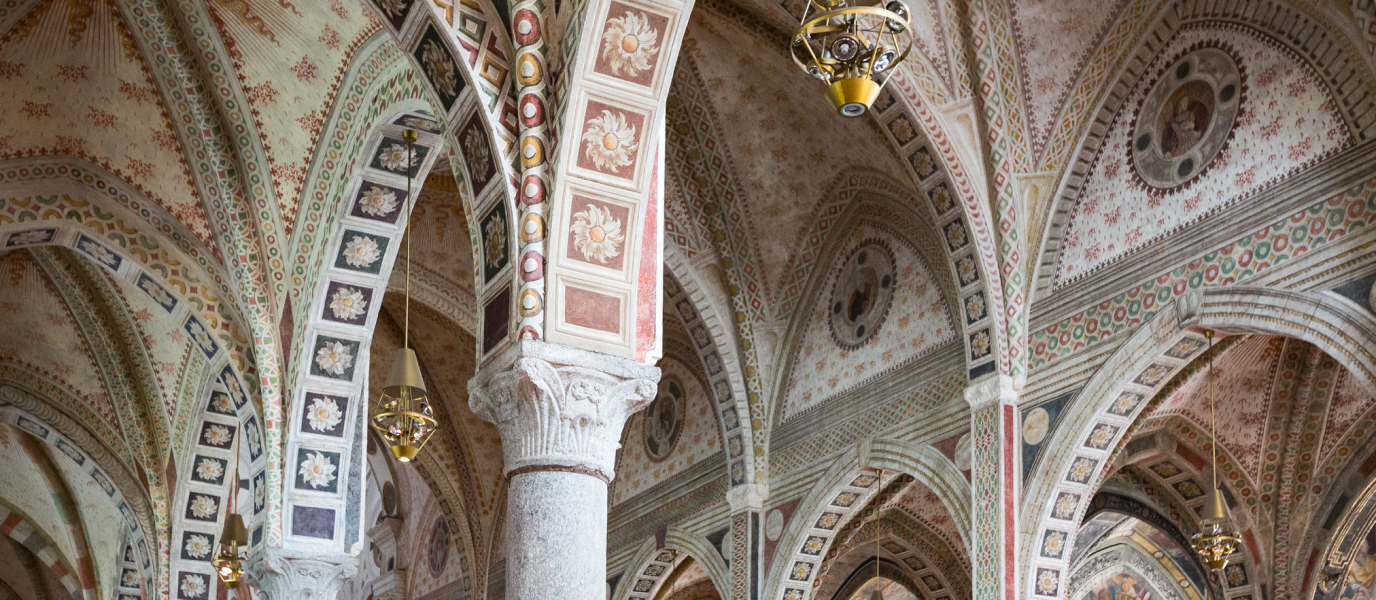Milan was a true industrial powerhouse many years ago, with millions of square metres of factories and train tracks that have since been left abandoned. As occurred in other European cities, such as London, there was a desire to cover up the decadent post-industrial style that had characterised these areas. In the 1970s, development proposals began to be put forward. It wasn’t until 1997, however, that the current design of Porta Nuova was decided upon. In total, the project took 14 years to complete. The area now finds itself in a constant state of flux due to the opening of new shops, the renovation of temporary exhibitions and the completion of new buildings.
The Porta Nuova district: around the Piazza Gae Aulenti
The district consists of three areas: Garibaldi, Varesine and Isola. The Argentinian architect César Pelli was responsible for designing most of the Garibaldi quarter, which is the largest of the three neighbourhoods and home to the tallest building in Italy.
The Varesine quarter, named after the old train station that connected the city to Varese, was designed by KPF: a world-renowned architectural firm famous for its iconic skyscraper designs. Varesine is home to the Torre Diamante (Diamond Tower), which has a curious asymmetrical steel structure.
The Isola quarter, formerly surrounded by railway tracks, is the greenest area of the district. However, it is also home to offices, shops, exhibition venues and luxury residences.
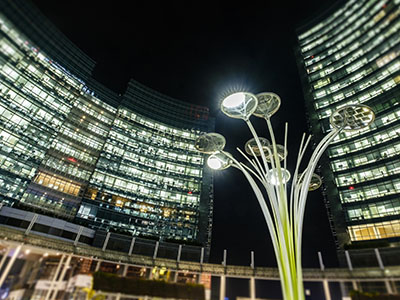
A science-fiction dream
This elegant and modern business centre is a true delight for the senses. The facades of the skyscrapers snake across the sky in impossible positions. By studying these buildings, one cannot help but imagine a knob of butter slowly melting, a lump of playdough being stretched, a piece of chewing gum being blown into a bubble or a melted hard-boiled sweet suddenly hardening. Their diverse shapes make you feel like you are living in a world of science-fiction. There are also alien-looking trees that light up as night falls, mimicking the Pandora Forest in the film Avatar. Various urban art installations are found throughout the square, such as Alberto Garutti’s ‘Golden Trumpets’ which rise from the lower floors up to the ground level. Arranged in a circle, they are exposed to the skies through a UFO-shaped skylight.
The fountain in the middle of the square plays a crucial role. It measures around sixty metres in diameter and has three oval-shaped vents that provide light to the two lower floors. This circular fountain has walkways that allow you to walk over the water and a series of benches with rounded corners that allow you to sit and admire the city’s skyline. However, the best spectacle begins when the sun goes down. The square is illuminated with a solar-powered LED lighting system and the fountain puts on a memorable light and sound show.
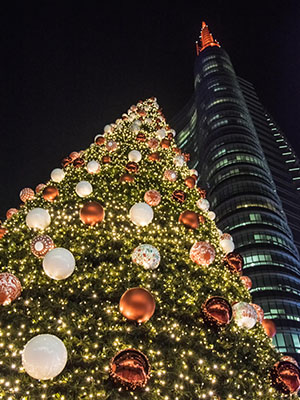
Things to see in the Piazza Gae Aulenti
The Piazza Gae Aulenti is surrounded by majestic and creative buildings that are well worth visiting.
Unicredit Tower
This 231-metre tall skyscraper is the tallest building in Italy and the headquarters of the country’s largest bank. It has won various awards for its aesthetic and functional design. The building is also covered with LED lights that change colour depending on the event or time of year.
Bosco Verticale
These two twin towers (internal link to Bosco Verticale), located in the Isola neighbourhood, feature more than 2,000 different plant species. The project, inspired by the Hanging Gardens of Babylon, seeks to reforest the urban area and increase its biodiversity.
Biblioteca degli Alberi
This is a public park in the middle of the city. Such is the variety of plant species that are found there, its name translates as “The Library of Trees”. Its geometric design is impressive when viewed from above: it is divided into irregular sections with separate green “rooms” formed by chains of trees, which serve as recreational or event areas.
Corso Como
Found close to the Piazza Gae Aulenti and connected by a pedestrian walkway is the famous Corso Como shopping street, which is brimming with shops, restaurants and all kinds of bars. It is frequented by famous models and celebrities, making it one of the most fashionable streets in the city.
























































